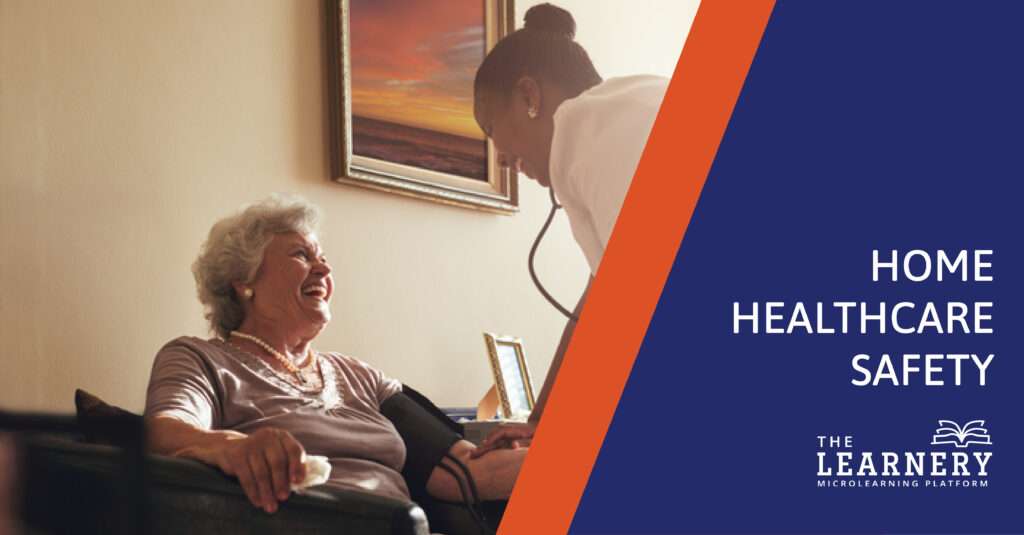Last week, we covered seven strategies for managing a remote home healthcare workforce. As the industry continues to grow exponentially – the home healthcare workforce in the United States is projected to grow 22% from 2022 to 2032, according to the Bureau of Labor Statistics – another issue needs to remain top of mind: safety.
It’s estimated that the home healthcare industry sees 15 million patients and executes more than 600 million patient visits each year. That’s 600 million opportunities for your care staff to be in some level of danger. Over a five-year period from 2015 to 2020, 117,000 homecare workers were treated in emergency departments for work-related injuries, with 93% of the injured workers being female.
In the uncontrolled environment of someone else’s home, it’s essential to acknowledge the stark reality home healthcare workers face including:
- Violence: Research studies have reported a range of 18% to 65% of home healthcare workers experiencing verbal abuse from patients. As many as 41% of home healthcare workers have reported sexual harassment, and up to 44% of home healthcare workers have reported being physically assaulted.
- Infectious Diseases: Exposure to illnesses like COVID-19, influenza, and other communicable diseases is a constant concern.
- Animal Dangers: Hostile pets/animals.
- Muscle or Skeletal Injuries: Sprains, strains, and other musculoskeletal injuries related to lifting and moving patients account for most injuries.
- Environmental Hazards: Slips, trips, and falls within unfamiliar homes, as well as unhygienic conditions or potential exposure to hazardous materials, pose additional risks.
- Emotional Stress: Compassion fatigue and burnout can impact worker well-being and decision-making.
7 Proactive Strategies for a Safer Workforce
With federal law requiring employers to provide a safe and healthy workplace, free from recognized hazards, and various state regulations governing home healthcare safety, it’s critical that an agency’s culture of safety is evident at all levels of the organization. Safety protocols for home visits, including buddy systems, emergency communication procedures, and personal safety training are paramount.
The National Association for Homecare and Hospice has great resources for updating and evaluating safety protocols, and we encourage you to study and use them. For the purposes of this article, we’ll summarize seven key points:
- Comprehensive Safety Training: Provide thorough training to all staff members, covering de-escalation techniques, infection control, fall prevention and medication safety.
- Thorough Client Assessments: Conduct comprehensive assessments of each client’s home environment, identifying potential hazards like trip hazards, aggressive pets, or unsanitary conditions. Develop personalized safety plans for each worker, taking these factors into account.
- Open Communication: Foster a culture of open communication where staff members feel comfortable reporting safety concerns without fear of reprisal. Create clear channels for reporting incidents and ensure prompt follow-up.
- Emergency Protocols: Develop and regularly practice emergency protocols, including procedures for contacting emergency services, reporting incidents to the agency, and accessing support resources.
- Safety Equipment and Resources: Provide staff with essential safety equipment, such as personal safety alarms and communication devices.
- Regular Safety Audits: Conduct routine safety audits of client homes and agency procedures to identify and address any potential weaknesses.
- Support Systems: Establish a robust support system for staff members, including access to counseling services and resources for managing stress and trauma.
Your employees are your most valuable asset. By prioritizing the safety of your home healthcare workers, you’re not just protecting your staff – you’re also protecting your agency. A safe workforce is a more productive, loyal, and compassionate one willing to provide the highest quality of care to patients. Investing in safety measures protects your reputation and your bottom line.
# # #
[1] https://www.bls.gov/ooh/healthcare/home-health-aides-and-personal-care-aides.htm
[2] https://ehsdailyadvisor.blr.com/2024/02/niosh-looks-at-homecare-worker-injuries/
[3] https://blogs.cdc.gov/niosh-science-blog/2021/09/02/hhc-violence/
[4] https://ehsdailyadvisor.blr.com/2024/02/niosh-looks-at-homecare-worker-injuries/
